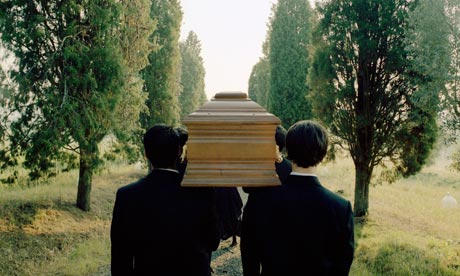The use of pallbearers which was traditionally men who were close relatives or close friends of the deceased, would carry the casket from the chapel of either a funeral home or church to the hearse, and from then from the hearse to the grave site for the burial. I have not witnessed the use of pallbearers at the funerals I have been to over the past few years. The funeral home workers quietly took the body out of the room of the funeral home and put the body in the hearse themselves and drove to the grave site.
The ritual of lowering the casket in front of mourners of the deceased has disappeared over time. I had not thought about this much until this assignment. Having attended a few funerals over the past years, I did not witness the body being lowered into the ground. This was done after the service at the grave site was completed once everyone departed.
Family members and friends no longer dig the grave themselves and then later toss the dirt back on the casket to help bury it. This is now done by cemetery workers

The form of gravestones evolved from large monuments to gravestones that were smaller flush markers during the late 1800s and the early 1900s. There was a pronounced shift during the 1920s that was reflecting American responses to the losses of World War I and the 1918-1919 influenza pandemic.
Financial conditions also directly affected the decisions regarding materials used. Trends revealed that granite gravestones gradually replaced marble in the late nineteenth and early twentieth centuries and financial struggles during the 1907 Bankers' Panic and the Great Depression were also a factor in requests for less expensive marble and metal grave markers.
Ufema, J. (1990). INSIGHTS ON DEATH & DYING. Nursing, 20(1),
photo:
What is a good death? Ritual, whether religious or not, still counts | Matthew Engelke | Comment is free | theguardian.com. (n.d.). Retrieved from http://www.theguardian.com/commentisfree/belief/2012/may/14/good-death-ritual-religious
Mallios, S., & Caterino, D. (2011). Mortality, Money, and Commemoration: Social and Economic Factors in Southern California Grave-Marker Change During the Nineteenth and Twentieth Centuries. International Journal Of Historical Archaeology, 15(3), 429-460
No comments:
Post a Comment